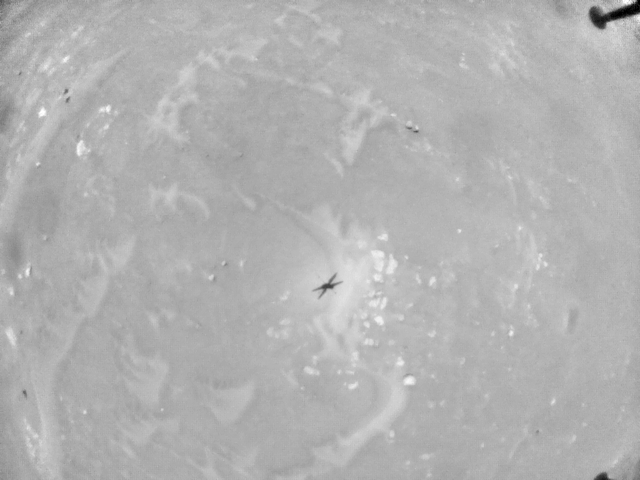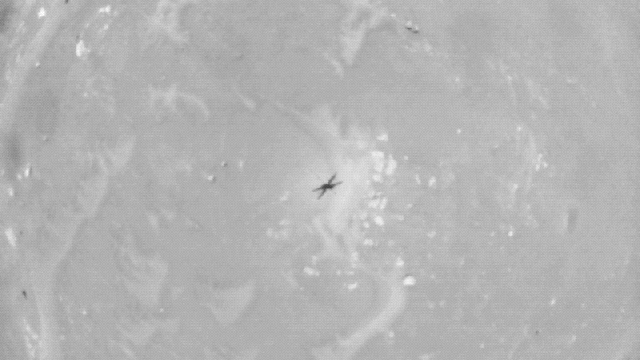Ingenuity experienced an “in-flight anomaly” during its sixth flight on the Red Planet, causing it to fly erratically. The helicopter managed to land safely, but the incident served as an unexpected stress test of the system.
The sixth test of Ingenuity on May 22, 2021, was supposed to push the helicopter to its limits, but mission planners got far more than they bargained for. For this stint, Ingenuity was to ascend 33 feet and then fly in a southwesterly direction for 492 feet, followed by two more trips, one for nearly 50 feet and one for 164 feet before landing at a designated spot.

The test flight began well, but things started to go seriously squirrely at the tail end of Ingenuity’s first stretch. The helicopter suddenly seemed uncertain, adjusting its velocity and “tilting back and forth in an oscillating pattern,” as Håvard Grip, the chief pilot of the Ingenuity Mars Helicopter, explained in an article prepared for NASA. This odd behaviour continued throughout the flight. Before landing, “onboard sensors indicated the rotorcraft encountered roll and pitch excursions of more than 20 degrees, large control inputs, and spikes in power consumption,” added Grip.

To understand what went wrong during this flight, we have to consider how this autonomous vehicle is able to keep things right. An onboard inertial measurement unit (IMU) enables Ingenuity to keep track of its location, speed, and orientation during flight. In turn, an onboard control system reacts to these measurements, which are actually just estimates. Indeed, on its own, the IMU would be insufficient for the task, as errors would build over time. To supplement this system, the helicopter uses its onboard navigation camera, which snaps 30 images of the Martian surface during flight, which are immediately transmitted to the navigation system.
But as Grip explains, this two-pronged system is dependent on an algorithm being fed accurate timestamps:
Each time an image arrives, the navigation system’s algorithm performs a series of actions: First, it examines the timestamp that it receives together with the image in order to determine when the image was taken. Then, the algorithm makes a prediction about what the camera should have been seeing at that particular point in time, in terms of surface features that it can recognise from previous images taken moments before (typically due to colour variations and protuberances like rocks and sand ripples). Finally, the algorithm looks at where those features actually appear in the image. The navigation algorithm uses the difference between the predicted and actual locations of these features to correct its estimates of position, velocity, and attitude.
At the 54-second mark of Ingenuity’s sixth flight, an in-flight anomaly upset this delicate balance. The steady flow of camera information was disrupted by a glitch — a single lost frame — causing all subsequent navigation images to be delivered with an erroneous timestamp. The navigation algorithm was thus operating with incorrect information about when the images were taken. Working with degraded data, Ingenuity entered into a mode in which it continually had to make corrections, resulting in the back-and-forth motions. Remarkably, Ingenuity still managed to continue its flight and land within a stone’s throw of its target location.
NASA designed Ingenuity to tolerate significant errors without becoming unstable, including errors in timing,” wrote Grip. This “built-in margin was not fully needed in Ingenuity’s previous flights because the vehicle’s behaviour was in-family with our expectations, but this margin came to the rescue” during the sixth flight. In addition, Grip said the helicopter “muscled through the situation” using its rotor system, actuators, and power system, which all responded to the increased demands of the wild flight.

The anomalous flight wasn’t intended, but by pushing Ingenuity to its limits, the glitch will likely produce some meaningful data. This “data will be carefully analysed in the time ahead, expanding our reservoir of knowledge about flying helicopters on Mars,” said Grip.
